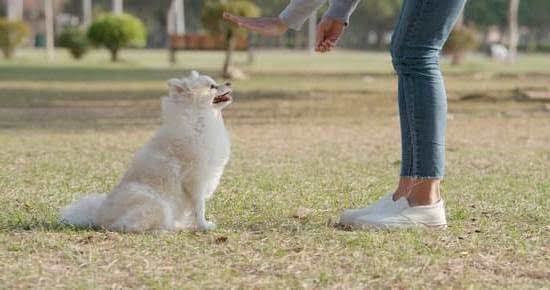Training a dog to fetch in the water can be a rewarding experience for both you and your furry friend. Not only does it provide mental stimulation and physical exercise, but it also helps strengthen the bond between you and your pet.
Whether you’re preparing for a day at the beach or simply want to incorporate water activities into your dog’s routine, learning how to train a dog to fetch in the water is a valuable skill to have.
Water fetch training is not only about fun; it also has practical benefits. Teaching your dog to retrieve objects from the water can be crucial in emergency situations where safety is paramount. Additionally, swimming and fetching exercises can improve your dog’s overall fitness and coordination, making them healthier and more agile.
In this comprehensive guide, we will explore everything you need to know about training your dog to fetch in the water. From choosing the right location for training to using positive reinforcement techniques, we’ll cover all aspects of water fetch training to ensure a successful and enjoyable experience for both you and your canine companion. So grab your floatable toys and get ready to make a splash with your pup.
Choosing the Right Location for Water Fetch Training
Training your dog to fetch in the water can be a fun and rewarding experience for both you and your furry companion. One of the key factors to successful water fetch training is choosing the right location. Here are some tips on selecting the perfect spot for your training sessions:
- Consider the safety of the location: Choose a body of water that is safe for your dog to swim in, with minimal currents or waves. Avoid areas with dangerous wildlife or debris that could harm your pet.
- Accessibility and space: Pick a location that is easily accessible and has enough space for your dog to roam freely without overcrowding or distractions. A secluded area can help minimize interruptions during training sessions.
- Water depth: Depending on your dog’s swimming abilities, choose a location with an appropriate water depth. Shallow waters are ideal for beginners, while deeper waters can be introduced gradually as your dog becomes more confident.
Once you have selected the perfect location for water fetch training, ensure that it provides a safe and conducive environment for your dog to learn and practice fetching in the water. The right setting can play a significant role in shaping your dog’s behavior and progression in mastering this skill.
Remember to always supervise your dog closely during water fetch training sessions and provide plenty of positive reinforcement to encourage their participation and success. With patience, consistency, and the right location, you’ll soon see your four-legged friend enjoying splashing around in the water while retrieving objects with enthusiasm.
Preparing Your Dog for Water Fetch Training
Understanding Your Dog’s Comfort Level With Water
Before jumping into water fetch training, it is essential to assess your dog’s comfort level around water. Some dogs naturally gravitate towards water and are more adventurous, while others may be more hesitant or even fearful. It is crucial to respect your dog’s boundaries and never force them into a situation that makes them uncomfortable. Gradual exposure to water and positive reinforcement can help build your dog’s confidence in aquatic environments.
Basic Water Safety Training
To prepare your dog for water fetch training, it is important to first ensure they know basic water safety commands. Commands such as “come,” “stay,” and “leave it” are crucial for keeping your dog safe around bodies of water. Practice these commands on land before transitioning to the water. Additionally, consider investing in a life vest for your dog, especially if they are new to swimming or have difficulty staying afloat.
Acclimating Your Dog to Water Fetch Toys
Introducing your dog to water fetch toys is an important step in preparing them for aquatic playtime. Start by getting your dog familiar with the toy on dry land, allowing them to sniff and interact with it. Gradually incorporate the toy into short fetching sessions near shallow waters.
Use treats and praise to motivate your dog to retrieve the toy from the water. Over time, increase the distance of the throws and encourage your dog to bring back the toy consistently before moving on to more challenging water fetch exercises. Remember, patience and positive reinforcement are key in how to train a dog to fetch in the water effectively.
Step-by-Step Guide on Introducing Your Dog to the Water
Introducing your dog to the water can be a fun and rewarding experience, but it’s important to take it slow and ensure that your furry friend feels safe and comfortable every step of the way. Here is a step-by-step guide on how to introduce your dog to the water:
1. Start with Shallow Water: Begin by introducing your dog to the water in a shallow and calm area such as a shallow pool, lake, or calm river. This will help ease your dog into the experience without overwhelming them.
2. Use Positive Reinforcement: Encourage your dog with treats, praise, and toys to make the experience positive and rewarding. Let them explore the water at their own pace and avoid forcing them if they seem hesitant.
3. Gradually Increase Depth: Once your dog is comfortable in shallow water, gradually increase the depth by moving further into the water while keeping it calm and supportive. You can also try fetching near the shore before venturing further out.
4. Practice Basic Commands: Before progressing further with water fetch training, ensure that your dog responds well to basic commands such as sit, stay, come, and fetch on land. This will help establish a foundation for their behavior in the water.
5. Take Breaks: It’s essential to take regular breaks during water introduction sessions to prevent your dog from getting exhausted or overwhelmed. Offer plenty of praise, rewards, and affection during breaks to reinforce positive associations with water activities.
By following these steps and being patient with your furry companion, you can help them feel comfortable and confident in the water before diving into more advanced training techniques on how to train a dog to fetch in the water.
Teaching Your Dog to Retrieve Objects in the Water
Introducing the Concept of Fetching in the Water
When it comes to teaching your dog to fetch in the water, it’s important to first introduce the concept of retrieving objects from a body of water. Start by choosing a calm and shallow area where your dog can easily enter and exit the water. Begin by tossing a toy or object into the water just a short distance away. Encourage your dog to go retrieve it by using positive reinforcement such as treats, praise, or a favorite toy.
Building Confidence in the Water
Some dogs may be hesitant to enter the water initially, especially if they are not used to swimming. It’s crucial to build their confidence gradually. You can start by standing in the shallow part of the water with your dog and slowly tossing the object closer and closer until they feel comfortable entering the water. Always provide lots of encouragement and support during this process to ensure that your dog feels safe and secure.
Reinforcing Retrieval Behavior
Once your dog is comfortable entering and retrieving objects from the water, it’s time to reinforce this behavior through consistent practice and positive reinforcement. Repeat the fetching exercise regularly, gradually increasing the distance at which you toss the object into the water. Use cues such as “fetch” or “get it” to help your dog associate these commands with fetching in the water.
Remember to always reward your furry friend for successfully retrieving objects in the water as they continue to improve their skills. With patience, consistency, and plenty of positivity, your dog will soon become a pro at fetching in the water.
Using Positive Reinforcement to Encourage Water Fetching Behavior
Dogs, like humans, respond well to positive reinforcement during training sessions, especially when it comes to learning new skills such as fetching in the water. Positive reinforcement involves rewarding your dog for exhibiting the desired behavior, making them more likely to repeat it in the future. In the case of water fetch training, using positive reinforcement can help encourage and motivate your furry friend to retrieve objects from the water.
One effective way to use positive reinforcement during water fetch training is by offering treats or verbal praise whenever your dog successfully retrieves an object from the water. This positive feedback creates a link between the action of fetching in the water and a pleasurable experience, reinforcing the behavior. You can also incorporate toys or playtime as rewards for your dog’s efforts in the water, making the training sessions fun and engaging for them.
Consistency is key when using positive reinforcement to encourage water fetching behavior in your dog. Make sure to reward them immediately after they retrieve an object from the water, so they can easily associate their actions with receiving a reward.
It’s important to stay patient and continue providing positive feedback even if your dog doesn’t get it right every time. With practice and encouragement, most dogs can learn how to fetch in the water effectively through positive reinforcement techniques.
| Positive Reinforcement Techniques | Benefits |
|---|---|
| Offering treats or verbal praise | Creates a link between behavior and rewards |
| Incorporating toys or playtime as rewards | Makes training sessions fun and engaging |
| Consistent immediate rewards | Helps dogs associate actions with receiving rewards |
Tips for Overcoming Challenges in Water Fetch Training
Training your dog to fetch in the water can be a rewarding experience for both you and your furry friend, but it is not without its challenges. Here are some tips to help you overcome common obstacles that may arise during water fetch training:
- Patience is key when facing challenges in water fetch training. Some dogs may be hesitant or fearful of entering the water at first, so it is important to take things slow and not force them into the water. Gradually introduce your dog to the water, starting with shallow areas and building up their confidence over time.
- Use positive reinforcement techniques to motivate your dog and reinforce good behavior. Reward your dog with treats, praise, or playtime whenever they successfully retrieve an object in the water. This will help them associate fetching in the water with positive experiences and encourage them to continue learning.
- If your dog is struggling to grasp the concept of fetching in the water, break down the training process into smaller steps. Start by simply getting them comfortable being around the water, then gradually introduce toys or objects for them to retrieve. Take it one step at a time and be patient with your dog as they learn this new skill.
By following these tips and remaining patient and consistent in your training efforts, you can overcome challenges in teaching your dog to fetch in the water successfully. Remember that every dog learns at their own pace, so stay positive and encouraging throughout the training process.
Safety Precautions and Equipment for Water Fetch Training
When engaging in water fetch training with your dog, safety should always be a top priority. Before starting any training session, make sure that the location is safe and appropriate for your dog’s skill level. Avoid areas with strong currents or deep waters if your dog is just starting to learn how to fetch in the water. It is essential to choose calm and shallow waters for their safety and yours.
Moreover, having the right equipment can make a significant difference in ensuring a safe and successful water fetch training session for your furry friend. A well-fitted life jacket made specifically for dogs is crucial, especially if you have a breed that may struggle with swimming or staying afloat. Additionally, using a floating toy designed for water fetch can help keep your dog engaged and motivated during training.
One essential aspect of safety during water fetch training is supervision. Always keep an eye on your dog while they are in the water, even if they are wearing a life jacket. This allows you to quickly intervene if necessary and prevent any accidents or dangers that may arise during the training session.
| Water Fetch Safety Precautions | Equipment |
|---|---|
| Choose calm and shallow waters | Well-fitted dog life jacket |
| Supervise your dog at all times | Floating toy made for water fetch |
Remember that each dog has different swimming abilities and comfort levels in the water. By taking these safety precautions seriously and using the right equipment, you can create a positive experience for both you and your canine companion during water fetch training sessions.
Advanced Water Fetch Training Techniques for Dogs With Different Temperaments
When it comes to training a dog to fetch in the water, it’s essential to understand that each dog has a unique temperament that may affect their willingness and ability to engage in water activities. Some dogs may be naturally more comfortable in the water, while others may require a bit more encouragement and patience. With the right techniques and approach, you can help your furry friend become a confident swimmer and skilled retriever in the water.
For dogs with a more cautious temperament, it’s important to introduce them to the water gradually and with positive reinforcement. Start by familiarizing them with shallow waters and allow them to explore at their own pace. Use treats, toys, or their favorite objects to entice them into the water and reward any progress they make. Patience is key when working with timid dogs, as rushing the process can lead to fear or anxiety about water fetch training.
On the other hand, energetic or fearless dogs may require additional challenges during water fetch training to keep them engaged and focused. Consider incorporating obstacles or varying distances when throwing objects into the water for them to retrieve.
This can help stimulate their mind and provide a more dynamic training experience. Additionally, try introducing different types of objects for fetching, such as floating toys or even balls that bounce on the surface of the water, to keep high-energy dogs entertained during aquatic playtime.
Conclusion
In conclusion, training your dog to fetch in the water can be a rewarding experience for both you and your furry companion. It is not just about teaching them a new trick, but also about building trust, bond, and confidence in the water. Remember that patience, consistency, and positive reinforcement are key elements in successfully training your dog to fetch in the water.
As you celebrate your dog’s achievements in water fetch training, reflect on the progress they have made from being hesitant around water to confidently retrieving objects. Each milestone reached is a testament to the hard work and dedication you have put into their training. Whether it took days or weeks, seeing your dog happily fetching in the water is a gratifying moment that brings joy and pride.
Continue to practice with your dog regularly to maintain their skills and reinforce their training. Keep exploring new locations for water fetch training to keep things exciting and engaging for both of you. Always prioritize safety by using appropriate equipment like life jackets and supervising your dog during water activities. With determination and love, you can successfully train your dog to excel at fetching in the water, creating wonderful memories together for years to come.
Frequently Asked Questions
How Do You Get a Lab to Retrieve in the Water?
Getting a lab to retrieve in the water requires patience, consistency, and positive reinforcement. It is important to start slowly by introducing your dog to shallow water first and gradually increase the depth as they become more comfortable. Use toys or treats to encourage them to swim out and retrieve items, always praising them for their efforts.
How Do You Train a Water Dog?
Training a water dog involves teaching them basic commands on land first before introducing them to the water. Positive reinforcement is key in this process, using treats or toys as motivation. Start by getting your dog used to being around bodies of water, then slowly introduce them to swimming and retrieving objects.
How Do I Get My Dog Used to Water?
Helping your dog get used to water involves gentle exposure and positive reinforcement techniques. Begin by allowing your dog to explore shallow waters at their own pace, using treats or toys as encouragement.
Avoid forcing your pet into the water if they seem uncomfortable and always praise and reward them for any progress made. Gradually building up their confidence in the water will help them become more comfortable over time.

Welcome to the blog! I am a professional dog trainer and have been working with dogs for many years. In this blog, I will be discussing various topics related to dog training, including tips, tricks, and advice. I hope you find this information helpful and informative. Thanks for reading!





